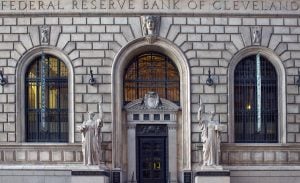
The Fed chairman or the Federal Reserve chairman is the face of the Federal Reserve Bank. The primary responsibility of the chairman is to carry out the Fed’s mandate, which is to ensure maximum employment, moderate long-term interest rates and stabilize prices. Over the years, the U.S. has seen several Fed chairmen, who have steered the economy through troubling times. Deciding who has been the best is almost impossible, but we could rank them on the basis of economic parameters. One such parameter is the stock market performance. In this article, we will discuss the top ten Fed chairmen by stock market performance.
Q3 2020 hedge fund letters, conferences and more
Top Fed chairmen by stock market performance
Following are the top ten Fed chairmen on the basis of the stock market performance during their term:
-
Daniel R. Crissinger (1923-1927, 17.7%)
During Crissinger’s term, the Dow Jones Industrial Average more than doubled. The inflation during his term was also low, resulting in record gains for the investors. Prior to becoming the Fed chairman, Crissinger served as Comptroller of the Currency. Crissinger adopted a more traditional approach for economic growth, i.e. giving easy credit at lower interest rates. He also supervised City National Bank of Marion (National City Bank & Trust Co.).
-
Paul Volcker (1979-1987, 15.4%)
Volcker was appointed by President Jimmy Carter in 1979, while he was nominated for a second term by President Ronald Reagan. He was popular as “Tall Paul” because of this height (6 feet, 7 inches). Volcker, who is also known for taming out-of-control inflation, raised the interest rates to about 20% on 1981. Volcker also worked for the Treasury Department, and is credited for the Volcker Rule, which limits banks from making high-risk investments using depositor’s money.
-
Janet Yellen (2014-2018)
She is the first and only female to lead the Fed so far, and was appointed by former President Obama. For about 30 years, Yellen worked in various roles at the central bank before becoming the chairman. Under former President Clinton, she served as the head of the Council of Economic Advisors. Yellen took on the task to “normalize” the Fed’s balance sheet, while keeping a close eye on inflation and unemployment.
-
Charles Sumner Hamlin (1914-1916)
He was the first chairman of the Fed. Prior to this, he was Assistant Secretary of the Treasury. On two occasions, in 1902 and 1910, he ran (unsuccessfully) for Governor of Massachusetts. Even though the stock market performed well under Hamlin, inflation also increased during this term, rising from 3% to 7.9%.
-
Thomas B. McCabe (1948-1951, 11.20%)
McCabe joined the Federal Reserve Bank of Philadelphia as a class C director in 1937. For 39 years, he served as the president and chief executive officer of Scott Paper Company. Also, he held many important positions during Franklin D. Roosevelt and Harry S. Truman administrations. After World War II, President Truman appointed McCabe as Chairman of the Board of Governors of the Fed.
-
Eugene Robert Black (1933-1934, 9%)
In 1921, Black became the president of the Atlanta Trust Company, while in 1928, he was appointed as the Governor of the Federal Reserve Bank of Atlanta. At the time of the Wall Street Crash of 1929, Black ensured large quantities of cash to banks witnessing shortage, as well as extended credit to banks that were ready to offer any asset of value. Black’s support for expansionist policies led to his appointment as the chairman of the Fed in 1933.
-
G. William Miller (1978-1979, 9%)
Prior to joining the Board of Governors, Miller was a Class B director at the Federal Reserve Bank of Boston. Miller is popular for his expansionary monetary policies. He was less focused on controlling inflation, and his objective was more on promoting economic growth. He believed that the Fed should work toward boosting investment, rather than combating price rise.
-
Alan Greenspan (1987-2006, 7.9%)
Greenspan was the second longest serving Fed chairman, serving for 18 years and five months. He served four presidents, including Ronald Reagan, George W. Bush, George H.W. Bush and Bill Clinton. Greenspan steered the economy through several financial shocks, including the “Black Monday” stock market crash of 1987, dot com bubble and the terrorist attacks of September 11.
-
Roy A. Young (1927-1930, 6.7%)
Young also served as the president of the Federal Reserve Bank of Minneapolis and president at the Federal Reserve Bank of Boston. He took measures to strengthen the banking system, including issuance of currency, rediscounting, international transaction settlements, and other traditional banking activities.
-
William M. Martin (1951-1970)
Martin holds the record for the longest-serving Fed chairman, 18 years and nine months. He served five presidents, and is known for tight money policies, as well as resisting political pressure from Washington. His decision to raise interest rates in 1965 triggered opposition from President Lyndon B. Johnson.
The post These are top ten Fed chairmen by stock market performance appeared first on ValueWalk.
